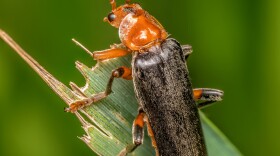Ant colonies are broken into castes based on the size and sex of the individual ant. There’s the queen. There are males that are only part of the colony for a short period of time, dying after mating. And there are workers, which can vary in size depending on their job.
The biggest ants in the colony are the soldiers – the workers charged with defending the colony. But from species to species, not all soldiers make the best warriors. So, what to do when you’re not much of a fighter and your colony is under attack?
Just use your head. No, these ants are not trying to outwit their foes, they literally use their shield-shaped heads. We give you the aptly named Door Head Ant.
With the colony residing in tunnels, any openings are the primary line of defense against letting other invading ant species or potential parasites in.
With their flat, saucer-shaped heads, Door Head Ant soldiers simply wedge their massive heads into the entrance of the colony, effectively plugging up the nest.
Even better, the heads of door head ants are camouflaged. Depending on the species, their heads can secrete fibers that resemble fungi or have small Velcro-like hairs to catch nearby debris, making a natural toupee that blends right in.
Once a threat is detected, the soldiers block any tunnel entrances and don’t budge.
Researchers have noticed Door Head soldiers with chunks bitten off the edges of their heads as potential predators try their best to remove the defending ant …battle scars that are unfortunately par for the course when your job is to stick your head in a hole.





